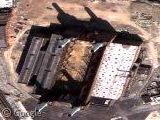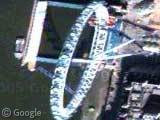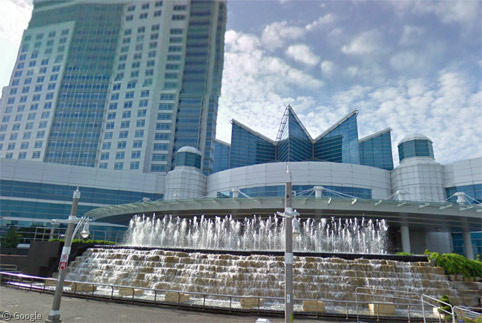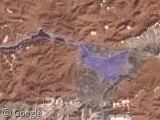Telephone Boxes
Friday, 24th July 2009 by Alex Turnbull
The humble red telephone kiosk is a much loved British icon, thanks to a long history on the streets of the United Kingdom. Today there are a fraction of the number there once were, but they are still a common enough sight that we can find some interesting ones to visit.

K2 model telephone boxes behind Enzo Plazzotta's bronze, "Young Dancer", on Broad Street, Covent Garden, London
The first recognisably "modern" red phone box was designed for a competition that the General Post Office held in 1924 to find a kiosk deemed acceptable to those London Boroughs that had refused to allow the erection of the previous K1 kiosks.
The winning entry, the K2, was designed by Sir Giles Gilbert Scott1 and from 1926 was erected all over London. Scott had suggested they be built from steel and painted silver, but the Post Office decided to make the K2 in cast iron, and to paint it red.
In 1929 the K3 was introduced, and although it was again designed by Gilbert Scott, this time they were painted cream. Like the K2 they were too expensive for widespread deployment, meaning that very few survive today, and as far as I can tell, there are none on street view. Instead here's a picture of the only surviving K3 in Scotland.
The K4 model was designed by the Post Office, which isn't surprising when you learn it had a post box and a stamp machine stuck on the back. Apparently phone users complained about the noise from the stamp machines so only 50 were ever made, and today only six of those survive. One of the surviving six is this one in Whitley Bay, Tyne and Wear, which despite being hidden under a tree, I managed to spot using Bing Maps.
The K5 was a plywood kiosk for temporary use, so it was for the K6 model that the Post Office returned to Sir Giles Gilbert Scott for his skills. Designed in 1935 to commemorate the silver jubilee of King George V, the K6 was the first red kiosk to be used extensively outside of London, and thousands were deployed in virtually every town and city. By the time production ceased on the K6, there were nearly 70,000 across the UK.

K6, Regent Road, Edinburgh. Grade II listed.

K6 (with traffic cone), Jowett Walk, Oxford. Grade II listed.
The K7 model by Neville Conder never went to production, so it was up to Bruce Martin to carry on the fine tradition that Scott had begun, and in 1968 the true successor to the K6 was finally launched. Used mostly for new locations, the K8 was a slightly different shade of red, had a flatter roof, and only one big window on each side.
According to The Twentieth Century Society, today only twelve of the original K8s remain in working order2, two of which are installed on the east side of the Erskine Bridge, just west of Glasgow.
Coinciding with the privatisation in 1984 of the Post Office's telephone successor, British Telecom, a more utilitarian design of telephone box began to be introduced.
The classic K6 was widely replaced with the frankly hideous KX100, and basically we've all been complaining about it ever since. In the late 90s, BT made an attempt to win the public over to the KX range by introducing the KXPlus which is basically a KX100 with a red bar round the sides and a domed red roof. It didn't work.
With the introduction of the KX100, around 2,000 existing boxes were given listed status, several thousand others were left in rural locations, but many more were sold off privately.
Lots of K6s have recently been restored and reinstalled in key tourism spots, but even more have been put to other uses; ranging from shower cubicles in private homes, through to this massive sculpture in Kingston upon Thames made of 12 tumbling boxes, entitled Out of Order.
There are several companies who specialise in selling and restoring old phone boxes, including Unicorn Kiosks, who are responsible for this 12-foot-tall custom kiosk in Maida Vale, London.
So if you're one of the many fans of the classic red phone box, you've now got no excuse not to come up with a creative way to save a piece of Britain's heritage, you'd just have to do is decide what to do with it!
Of course there are many more phone boxes around the world… have you got one near you?
For helping me research this post, many thanks go to Robert Ore of redphonebox.info, headington.org.uk, and www.cvphm.org.
-
Who was also responsible for Battersea Power Station. ↩︎
-
Four of them in Swindon for some reason. ↩︎













We have one in the MIT Student Center which has been converted into a campus phone. Here’s a photo: http://chillin.posterous.com/red-telephone-box-in-the-mit-student-center-t
I’ll try to get a photo or two showing the area around the red telephone box when I’m on campus today.
Following up: I took another photo of the telephone box in the MIT Student Center (Cambridge, MA, USA) to provide some context.
http://chillin.posterous.com/take-two-of-the-red-telephone-box-in-the-stud
As a matter of fact not only in the UK there still are some of the old red K2 telephone booths. In the town of Porto, in north Portugal we still have a few of them. One of the last who arrived was a present of the people of Bristol,to whom Porto is twined with. We certainly praise them very much as we still have fond memories of the time the British colony in this town was huge.
Here’s a picture of one of them, but I can’t spot it via Google Maps!
http://commons.wikimedia.org/wiki/File:Cabine_telefonica_%28Porto%29.JPG
View Placemark
Check out the Gallery on the Green, in Settle, Yorkshire: http://www.galleryonthegreen.org.uk/
It’s located in the centre of: View Placemark
There is also an old K2 (I thinks its a 2 anyway) here in the BVI’s
View Placemark
Its on the end of the jetty at Pusser’s Landing which you cannot really make out in Google maps but luckily they have webcam running
http://www.pussers.com/redbox/
You know everyone was expecting to see one of these: http://en.wikipedia.org/wiki/TARDIS
Can’t let this pass without a reference to yarnstorming
http://knitthecity.com/2009/07/09/yarnstorm-the-third-the-phonebox-cosy/
You have one in Oxford, but there’s another…. that is, in Oxford, MS:
View Placemark (34.366715,-89.517973) (go to street view)
Here it is on Street View: https://www.googlesightseeing.com/maps?p=&c=&t=h&hl=en&ll=34.366715,-89.517973&z=14&layer=c&cbll=34.366715,-89.517973&cbp=12,234.52,,0,4.57
K4 in Warrington
http://www.bing.com/maps/default.aspx?v=2&FORM=LMLTCP&cp=swxwc2gshk38&style=o&lvl=2&tilt=-90&dir=0&alt=-1000&phx=0&phy=0&phscl=1&scene=29418335&encType=1
K6 in Salford
View Placemark,,0,4.17
And two together in Manchester
View Placemark,,2,2.06
An impressive row of 8 K6’s outside the Post office in Blackpool
http://www.bing.com/maps/default.aspx?v=2&FORM=LMLTCP&cp=sz2tgbgrc38c&style=o&lvl=2&tilt=-90&dir=0&alt=-1000&phx=0&phy=0&phscl=1&scene=7587260&encType=1
Here’s two cream coloured K8s in Hull:
https://www.googlesightseeing.com/maps?p=&c=&t=h&hl=en&ll=53.755032,-0.359045&z=20
http://www.bing.com/maps/default.aspx?v=2&FORM=LMLTCP&cp=sys7tqgz324f&style=b&lvl=2&tilt=-90&dir=0&alt=-1000&phx=0&phy=0&phscl=1&scene=11737491&encType=1
We have a few telephone boxes over here in Buenos Aires too, but I don’t think there are any more than four or five in the neighborhood of Recoleta, and I think in Tigre as well.
Here’s one
http://en.wikipedia.org/wiki/File:La_biela.JPG
In my neighborhood and on maps!
View Placemark,,2,2.59
St Mary’s St, Cambridge: View Placemark,,0,12.05
Michael. 🙂
We have some UK boxes here in France too:
View Placemark,,0,5&ll=45.048512,5.049527&spn=0,359.972126&z=16
View Placemark,,0,5&ll=45.037723,5.047043&spn=0,359.996516&z=19
There is a K6 on a dock at Marina Cay, BVI. Unfortunately, it is not visible in Google Maps.
View Placemark
For info and photos , see the site below.
http://www.pussers.com/scuttlebutt/view/64
there’s a working one in my town of Horsforth (suburb of Leeds) here it is in google maps: View Placemark
William Jewell College in Liberty MO has a functioning box.
View Placemark,,0,7.82